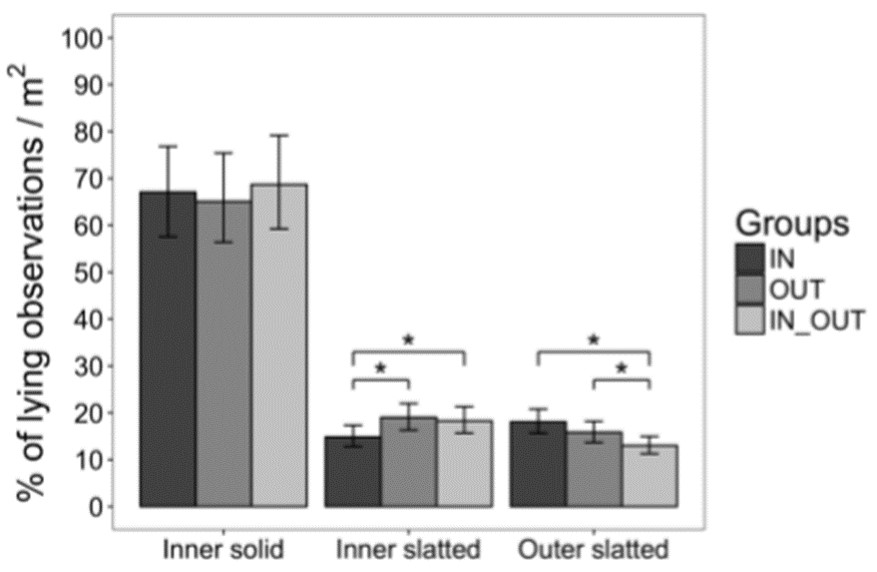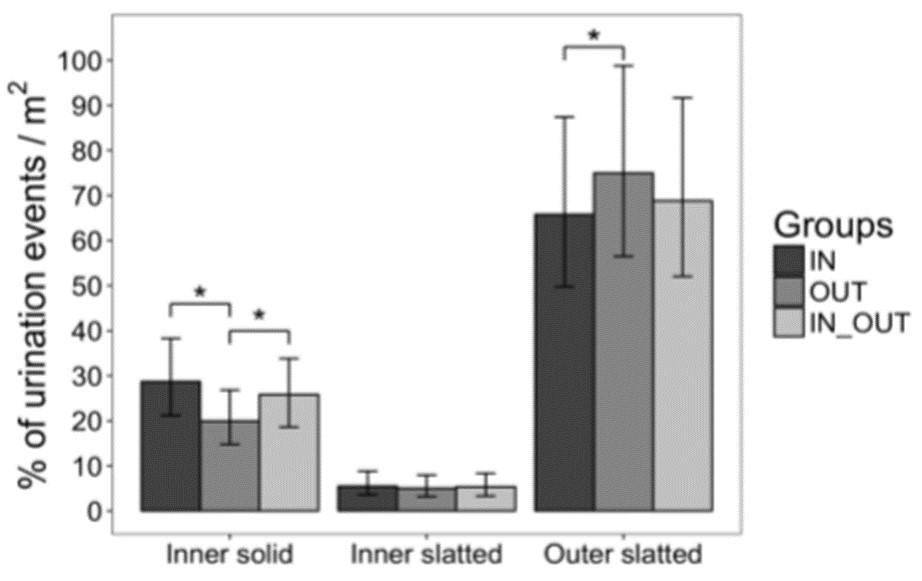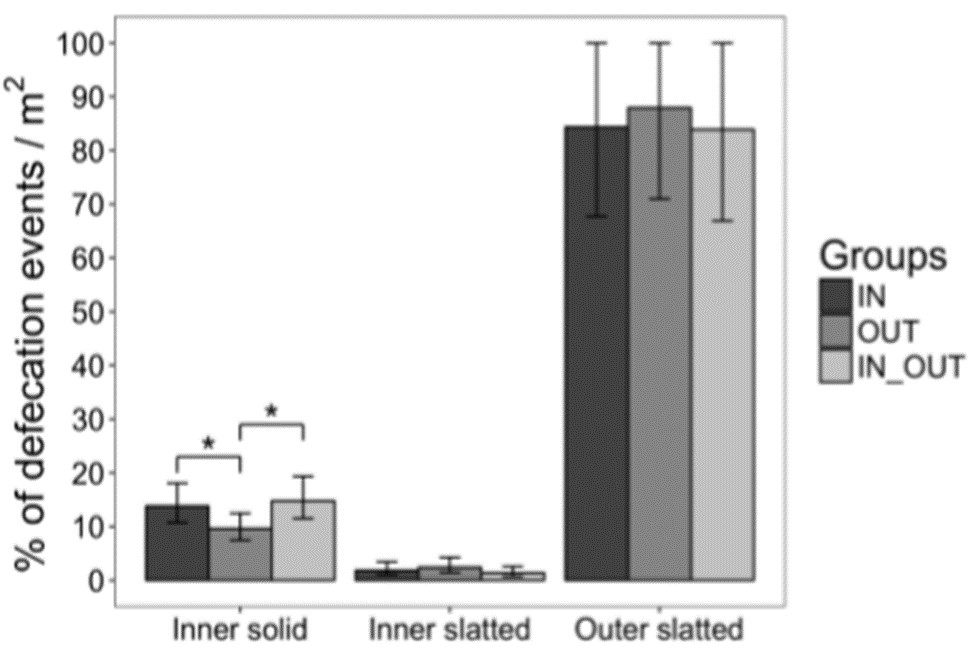



Importance of drinker positioning for swine welfare
Understanding eliminative behaviour in pigs has important implications for improving the design of pig housing facilities and maximising pig welfare. A simple drinker-positioning method has been shown to increase the cleanliness of pigs’ dedicated lying areas, writes Matthew WedzeraiSeveral studies have shown that inappropriate eliminative behaviour (urination and defecation) in pigs causes fouling of pen areas used for lying which has negative implications on both the cleanliness of pens and pigs, and can cause distress in the animals. In addition, human and pig health is compromised through poor sanitisation which can result in impairment of farm productivity.
Pig welfare has grown to be one of the major concerns for consumer preferences of meat products. Recent studies have highlighted some facts concerning livestock welfare and consumer preferences.
A summary of some of these facts are as follows:
- In EU member states, and in other developed countries, the well-being of livestock is a serious issue for many people.
- Welfare traits exceeding those in standard products would provide consumers with an opportunity to align their meat consumption with their concerns.
- Kehlbacher et al. (2012) investigated British consumer attitudes to a tiered welfare score indicating relative animal welfare levels on livestock products. They found that consumers were willing to increase their monthly meat expenditure by 26% and 32% for meat produced according to the welfare scores “enhanced” and “excellent” respectively.
Pig behaviour
To understand what abnormal pig behaviour is, we first have to know the normal behaviour. In general, pigs are considered clean animals, and their natural behaviour is to distinguish between areas for lying and excreting. Pigs are reported to spend about 80 percent of their time lying, therefore, ensuring comfort when lying is a priority in any welfare-conscious housing design. Proper housing design should aim at reducing the number of pigs lying and fouling on the solid floor with urine and faeces; this also lowers the ammonia emission, reducing the negative impacts on the environment.
In addition, pigs normally avoid lying in areas that are draughty or wet or fouled – they tend to eliminate in separate (outer) areas, especially on slatted floor areas, as well as in cold or wetted areas, and near walls or in the corner of their pens. Pigs have also been observed to eliminate at the pen boundaries where communication with neighbouring pigs is possible, as well as areas around drinkers, but not so much around feeders; this takes us back to the importance of properly positioning drinkers to influence excretion behaviour in pigs.
Housing design
In growing-fattening pigs, fouling in lying, feeding or drinking areas is considered an abnormal behaviour – a factor which is mainly influenced by the design of the pen.
In modern, commercial, and welfare-friendly pig housing systems, lying areas should consist of solid, insulated or heated floors with closed pen partitions, and feeders located in the corners. By contrast, eliminating areas consist of inner and outer slatted floors, including drinkers and open pen partitions. A key factor in this design is the placement of drinkers. In particular, placing the drinkers over the outer slatted floor areas, as opposed to the inner slatted areas, could reduce eliminative behaviour on the inner solid floor area and, therefore, improve the quality of lying areas.
However, to maintain good welfare, all other welfare factors should also be well managed; the main critical points on the farm likely to cause welfare impairment or stress include buildings, inner facilities, space allowance, microclimate, lighting systems, environmental stressors and feeding management.
To understand the eliminative behaviour of pigs as influenced by housing design, in particular, the positioning of drinkers, a recent study was conducted (Ocepek et al., 2017) (see below). Specifically, the study was designed to investigate how the placement of drinkers influences lying and eliminative behaviour in growing-finishing pigs in a welfare-friendly housing system.
Trial design
Animals, housing and feeding
- Grower-finishing pigs
- 8 pens per treatment
- Housed in groups of 18 (9 males + 9 females)
- Pigs were fed ad libitum
- There were two feeders placed per pen, one in each corner of the lying area, with the openings facing the inner slatted floor
- Pigs had free access to two nipple drinking bowls per pen (see pen design below).
Pen design
Drinker placement to study the effect of lying and eliminative (urination and defecation) preferences of pigs in different floor areas (inner solid, inner slatted, outer slatted) was as follows:
- Two drinkers inner (IN),
- Two drinkers outer (OUT), and
- One drinker inner and one drinker outer (IN_OUT)

Pen design during the trial where both drinkers were positioned either internally (IN), externally (OUT), or with one drinker indoors and one outdoors (IN_OUT).
Measuring observations
The behaviour of pigs was continuously video-recorded for a day (00:00 - 23:59 h) every two weeks. A total of 12 video cameras were mounted on the wall, each covering two inner or two outer pen areas. Pens were divided into three floor areas (as shown above): inner solid, inner slatted and outer slatted.
From the videos, the following was recorded:
- The number of urinations and defecations on each pen area (1 to3) from continuous recordings during one quarter of every hour.
- The number of pigs lying on each pen area from instantaneous scan sampling every 15 minutes. Pigs lying on the border between two areas were assigned to the area in which the largest part of the pig was lying.
Trial results
Lying area preferences
On average, 67% of lying observations per m2 were on the inner solid area, 17.4% on the inner slatted area, and 15.7% on the outer slatted area. There were no significant differences between groups on the inner solid area. For the inner and outer slatted areas, statistical differences are shown by an asterisk symbol (*), as shown in the figure below.

Percentage of total lying observations either on the solid inner flooring, on the inner slatted flooring and on the outer slatted flooring when the drinkers were placed either both internally, both externally, or one inside and one outside.
Urination area preferences
Percentage of urination events in each floor area by drinker group is shown in the figure below. On average, 24.8% of urination observations per m2 were on the inner solid area, 5.3% on the inner slatted area, and 69.9% on the outer slatted area. Statistical differences between groups are highlighted by an asterisk symbol (*), as shown in the figure below.

Percentage of urination events on either on the solid inner flooring, on the inner slatted flooring and on the outer slatted flooring when the drinkers were placed either both internally, both externally, or one inside and one outside.
Defecation area preferences
Percentage of defecation events in each floor area by drinker group is shown on the figure below. On average, 12.7% of defecation events per m2 were on the inner solid area, 1.8% on the inner slatted area, and 85.4% on the outer slatted area. Statistical differences between groups are also highlighted by an asterisk symbol (*), as shown in the figure below.

Percentage of defecation events on either on the solid inner flooring, on the inner slatted flooring and on the outer slatted flooring when the drinkers were placed either both internally, both externally, or one inside and one outside.
Summary
- Pigs urinate and defecate as far away as possible from the areas where they prefer to rest.
- The placement of drinkers in pig pens influences lying and eliminative behaviour. Placing the drinkers in the outer instead of the inner area resulted in more than a 30% decrease in the likelihood of urination on the inner solid floor, and approximately a 20% increase in the likelihood of urination on the outer slatted floor; this is in accordance with findings that pigs prefer to urinate in areas around drinkers, which are prone to spillage especially as both behaviours are performed in sequence.
- Placing drinkers (preferably both drinkers) in separate outer areas reduces unfavourable fouling on the solid floor and, thus, provides a cleaner solid floor area for lying.
- Designing pens that encourage less fouling of the solid floor could reduce the negative environmental impacts of animal farming, as well as improving pig welfare on farms.
- Drinker-positioning is a simple method of increasing the cleanliness of pigs’ dedicated lying areas, which has important implications for improving the design of pig housing facilities and maximising pig welfare.
About the author
Matthew Wedzerai holds an MSc in Animal Science (Animal nutrition) from Wageningen
University, The Netherlands. He also holds a Diploma in Pig husbandry & Animal Feed,
PTC+ College, The Netherlands.
He has 7 years’ experience in the pig husbandry and animal feed industry. Since 2014 he
has been contributing to the pig and feed industry through his articles based on scientific research.
He is also a Copywriter and Editor of the editing company, Spotless Copy, a firm that
provides professional copy-writing and editing services.









